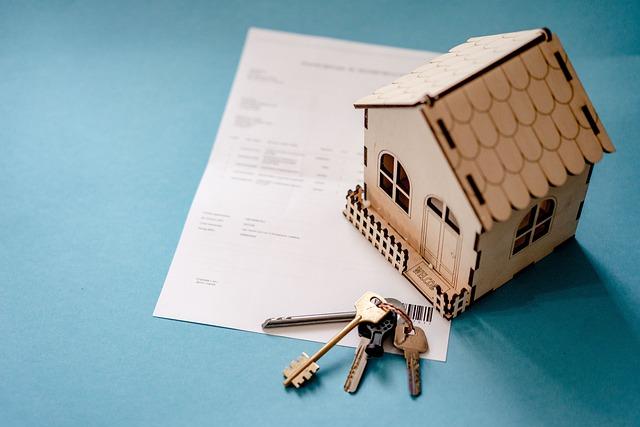When a property sits empty, it can quickly become vulnerable to a range of risks—from vandalism and theft to weather damage and liability issues. For owners, investors, and property managers, understanding the nuances of vacant property insurance is essential to protecting these often overlooked assets. Unlike standard homeowner or commercial property policies, vacant property policies offer specialized coverage tailored to the unique exposures that come with unoccupied buildings. In this article, we’ll break down the key coverage options available, helping you make informed decisions to safeguard your vacant property effectively.
Table of Contents
- Understanding the Scope of Coverage for Vacant Properties
- Key Exclusions and Limitations to Watch For
- Tailoring Your Policy to Specific Vacancy Scenarios
- Essential Risk Mitigation Strategies for Property Owners
- Final Thoughts
Understanding the Scope of Coverage for Vacant Properties
When it comes to insuring vacant properties, the range of coverage provided often differs significantly from traditional homeowner policies. Standard policies typically exclude damages or liabilities that occur when a property is unoccupied for an extended period. This leaves property owners vulnerable to a variety of risks, including vandalism, theft, and unnoticed maintenance issues. To mitigate these risks, vacant property policies are specially designed to fill these gaps, offering tailored protection that acknowledges the unique case of an empty home or building.
Coverage under these policies generally includes but is not limited to:
- Fire and vandalism protection: Ensuring damages resulting from intentional harm or accidents are covered.
- Liability for injuries: Protecting owners if someone is injured on the vacant premises.
- Weather-related damages: Coverage for damage from storms, wind, or water intrusion, which may go unnoticed in a vacant property.
- Optional endorsements: Additional coverages such as plumbing leaks or mold damage depending on policy customization.
Understanding these components is crucial when selecting a policy, as many insurers place strict time limits on vacancy before coverage changes or exclusions apply. Investors and landlords alike should ensure their policy language clearly addresses the length of vacancy and the specific hazards they want protection from to avoid unexpected claims denials.
Key Exclusions and Limitations to Watch For
When considering vacant property policies, it’s crucial to recognize that not all risks are covered. Many insurers impose strict exclusions, particularly related to the property’s condition and usage during vacancy. For instance, damage resulting from vandalism or theft might be limited unless additional endorsements are purchased. Moreover, water damage caused by unattended plumbing leaks is often excluded, reflecting the insurer’s concern over unattended maintenance. Understanding these exclusions upfront can save property owners from costly surprises when filing a claim.
Additionally, vacant property policies frequently come with stringent policy conditions aimed at reducing risk exposure. These commonly include regular inspections, security measures like alarms or boarding up, and restrictions against certain activities such as illegal use or unauthorized occupancy. Failure to comply with these conditions can lead to claim denials or policy cancellation. Keeping a checklist of such limitations and working closely with your insurer ensures that your coverage remains effective throughout the vacancy period.
Tailoring Your Policy to Specific Vacancy Scenarios
Every vacant property presents a unique risk profile that insurance policies must adapt to in order to provide effective protection. Properties left unoccupied for short durations, such as renovations, often require coverage that emphasizes theft and liability during transitional phases. Conversely, long-term vacancies—commonly seen in commercial real estate or seasonal homes—demand policies that address increased risks like vandalism, squatters, and deterioration-related damages. Customizing coverage based on the duration and purpose of vacancy ensures that you’re not overpaying for unnecessary protections while still mitigating the most critical vulnerabilities.
When tailoring a policy, consider options that specifically cater to your vacancy scenario:
- Short-term vacancy addendums: Enhances coverage during brief unoccupancy, often with limited exclusions.
- Extended vacancy endorsements: Provides protection for prolonged periods, including safeguards against squatter removal costs and deferred maintenance.
- Seasonal vacancy plans: Optimized for properties occupied intermittently, balancing liability and physical damage coverage.
- Renovation-specific coverage: Bridges the gap when properties are gutted or under construction, addressing unique risks related to contractors and materials.
Essential Risk Mitigation Strategies for Property Owners
Effective risk mitigation begins with a proactive approach to identifying and addressing vulnerabilities inherent in vacant properties. Property owners should implement comprehensive security measures such as installing surveillance systems, regularly inspecting the property, and engaging trusted caretakers to maintain upkeep. These actions not only deter potential intruders but also help detect maintenance issues early, preventing costly repairs. Furthermore, securing all entry points with reinforced locks and using motion-activated lighting can significantly reduce the risk of theft, vandalism, and accidental damage during periods of vacancy.
Beyond physical safeguards, it’s critical to understand the nuances of insurance coverage that specifically pertain to vacant properties. Standard homeowner policies often exclude damage incurred during extended vacancies, making standalone vacant property insurance essential. When selecting a policy, consider the scope of coverage for fire, vandalism, water damage, and liability. Additionally, clarify whether the insurer requires periodic inspections or maintenance reports as conditions for full coverage. By combining rigorous physical risk management with tailored insurance solutions, property owners can safeguard their investments and avoid unexpected financial losses.
Final Thoughts
Navigating the complexities of vacant property insurance can feel overwhelming, but understanding your coverage options is essential to protecting your investment. Whether you’re a property owner, manager, or investor, being informed about policy nuances—from the types of risks covered to the specific clauses related to vacancy periods—empowers you to make smarter decisions and avoid costly surprises. As with any insurance matter, consulting with a knowledgeable agent can help tailor a policy that fits your unique situation. Ultimately, taking the time now to comprehend these coverage options can save you significant headaches down the road, ensuring your vacant property remains safeguarded no matter what challenges arise.







